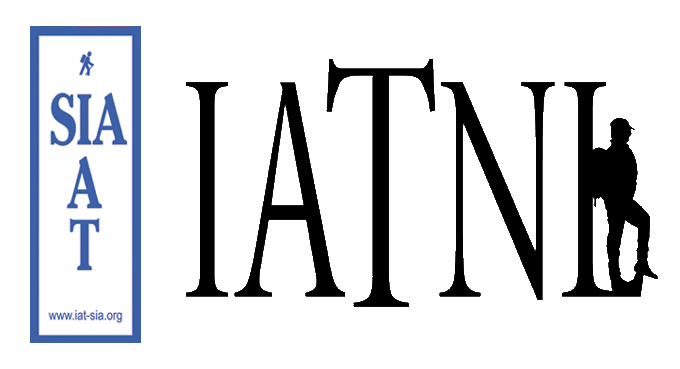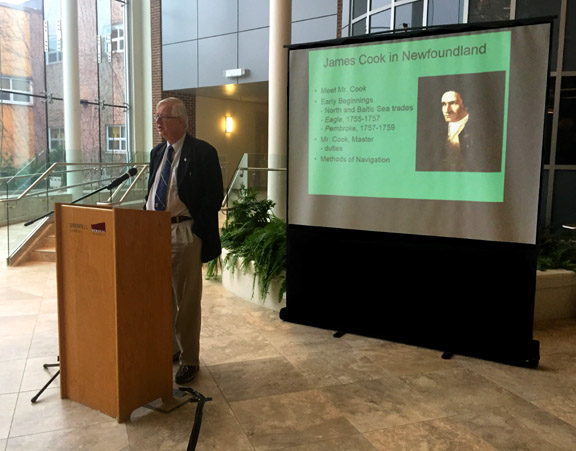In January 2013, England’s Ridgeway National Trail joined the International Appalachian Trail as “Britain’s Oldest Road.”

The 87 mile (139km) path crosses ancient landscapes on both sides of the River Thames, following the same route used since prehistoric times by travellers, herdsmen and soldiers. It passes through two distinctive landscapes: the open downland to the west of the Thames within the North Wessex Downs Area of Outstanding Natural Beauty, and the more gentle and wooded countryside of the Chilterns Area of Outstanding Natural Beauty to the east.
.jpg)

The route follows a chalk ridge cut in two at almost its mid-point by the Goring Gap through which the River Thames flows. The chalk started to form about 100 million years ago beneath the seas, and the landscape we now see began to take shape around 30 million years ago as Africa collided with Europe. This caused the rocks in this area of England, including the chalk, to tilt very slightly towards the southeast. The result of this is that the northern edge of the chalk drops down as a steep hill, or scarp, to flat valleys below, while the chalk plateau declines gently away to the south.
For at least 5,000 years, people – including drovers, traders and invaders – have walked or ridden The Ridgeway, part of a prehistoric track once stretching about 250 miles (400 km) from the Dorset coast to the Norfolk coast “Wash.” It provided a high ground route for travellers, which was less wooded and drier than routes through the springline villages below.
 New Stone Age men, the first farmers in Britain, left the earliest remains. Their long barrows can be found both west and east of the Thames. However it was Bronze Age people circa 2,000 BC who dragged the huge sarsen stones from the surrounding hills and formed the dramatic Avebury Circle. There are many of their round burial barrows along the length of the Trail.
New Stone Age men, the first farmers in Britain, left the earliest remains. Their long barrows can be found both west and east of the Thames. However it was Bronze Age people circa 2,000 BC who dragged the huge sarsen stones from the surrounding hills and formed the dramatic Avebury Circle. There are many of their round burial barrows along the length of the Trail.
Hill forts built during the Iron Age from about 500 BC until the Romans arrived in 43 AD are also found both sides of the Thames. These forts command the high ground and in several places they defended The Ridgeway against attack from the north.

Uffington Castle, one of several Iron Age hill forts along the The Ridgeway
In the Dark Ages The Ridgeway was a main route for the Saxons and Vikings, who fought many battles during their advances into Wessex. In medieval times it was drovers driving livestock from Wales and the West Country to the Home Counties, not armies, who used The Ridgeway.
 Until the Enclosure Acts of 1750, The Ridgeway was a broad band of tracks along the crest of the downs, where travellers chose the driest or most convenient path. Afterwards its course and width was defined by the addition of earth banks and thorn hedges to prevent livestock from straying into the newly cultivated fields.
Until the Enclosure Acts of 1750, The Ridgeway was a broad band of tracks along the crest of the downs, where travellers chose the driest or most convenient path. Afterwards its course and width was defined by the addition of earth banks and thorn hedges to prevent livestock from straying into the newly cultivated fields.
The Ridgeway route itself can be divided into six sections. The first, Overton Hill to Ogbourne St George, is 9.3 miles (14.8km) long and climbs gradually to Barbury Castle Iron Age fort.

Barbury Castle Iron Age Fort
Along this section there are small clumps of beech woodland planted by the Victorians as landscape features and to give sheep a little shelter. The countryside is a mixture of arable land changing colour with the seasons, and areas of sheep or cattle-grazed grassland.  Some of the best views are from Smeathe’s Ridge as you descend from Barbury Castle to Ogbourne St George. As well, the pretty village of Ogbourne St George in the valley of the River Og contains many lovely cottages, some of them built out of blocks of chalk with thatched roofs. It also has two pubs!
Some of the best views are from Smeathe’s Ridge as you descend from Barbury Castle to Ogbourne St George. As well, the pretty village of Ogbourne St George in the valley of the River Og contains many lovely cottages, some of them built out of blocks of chalk with thatched roofs. It also has two pubs!
The second section of trail – from Ogbourne St George to Sparsholt Firs – is 16 miles (25.6km) long and is perhaps the most remote, with wonderful views and prehistoric monuments to enjoy. There’s an initial fairly steep climb out of the Og Valley on a narrow, sunken, tree-lined track after which The Ridgeway remains reasonably level until the M4 is crossed. From there the Trail undulates fairly regularly making this a relatively strenuous section along a mostly hedge-lined track. This is a completely rural section where you’ll find yourself mostly surrounded by large fields stretching into the distance, with crops, sheep, cattle and occasionally pigs.


After the crossing of the M4 small villages are strung out below to the north of The Ridgeway at the spring line where water seeps between different geological layers. Many of these settlements are worth a visit to enjoy the local vernacular architecture which includes cottages built from chalk blocks quarried from the downs.
The Sparsholt Firs to Streatley section is 17.4 miles (27.9km) long and is characterized by rolling open downland to the south, punctuated in places by small woodlands and fine views north into the Thames Valley. On a clear day you can see the hills in the distance behind which nestles Oxford, and further east, the Chiltern Hills through which The Ridgeway later travels. This is horse racing country, and an early riser will encounter strings of racehorses exercising on the numerous gallops, which are long ribbons of well-managed grass tracks adjacent to The Ridgeway.

On Horseback above Sparsholt
Section 4, Streatley to Watlington, is 15.3 miles (24.6km) long and includes water, woodlands and small villages. It contrasts considerably with the open and more remote countryside west of the River Thames, which is your companion for the first few miles as you pass through water meadows grazed by cattle and two lovely villages, South and North Stoke.
 At the bridge separating Streatley and Goring-on-Thames, The Ridgeway crosses the Thames Path National Trail following the opposite bank of the river. Heading east it follows a narrow secluded path alongside an ancient Grim’s Ditch, much of it surrounded by woodland carpeted with bluebells and wood anemones during spring.
At the bridge separating Streatley and Goring-on-Thames, The Ridgeway crosses the Thames Path National Trail following the opposite bank of the river. Heading east it follows a narrow secluded path alongside an ancient Grim’s Ditch, much of it surrounded by woodland carpeted with bluebells and wood anemones during spring.
From the village of Nuffield you turn north and soon reach the small hamlet of Swyncombe, an area which is probably one of the remotest and loveliest parts of the Chilterns. Here, the small flint church of St Botolph’s has been beautifully restored. Descending from Swyncombe to near the base of the scarp, The Ridgeway picks up the Upper Icknield Way and follows this broad hedge-lined track for the remaining couple of miles to Watlington.

St Botolph’s Church at Swyncombe
The Watlington to Wendover section is 17 miles (27.2km) long and is dominated by fine beech woodlands for which the Chilterns are justly famous. This section is the most undulating with several climbs in and out of valleys and is therefore the most strenuous part of The Ridgeway, but being southern England it’s not that tough!

It starts out gently enough, with a few miles on the level broad track of the ancient Icknield Way at the bottom edge of the Chilterns scarp. Along this section it crosses the M40 via an underpass where the motorway slices through the Aston Rowant National  Nature Reserve in a deep cutting. After it leaves the Icknield Way, The Ridgeway strikes across fields and over Lodge Hill to Princes Risborough. From there the terrain starts seriously to undulate as the Trail climbs in and out of valleys before finally descending to the small attractive town of Wendover.
Nature Reserve in a deep cutting. After it leaves the Icknield Way, The Ridgeway strikes across fields and over Lodge Hill to Princes Risborough. From there the terrain starts seriously to undulate as the Trail climbs in and out of valleys before finally descending to the small attractive town of Wendover.
Section 6, Wendover to Ivinghoe Beacon, is 11.8 miles (18.8km) long and is the most wooded of all The Ridgeway. Here you’re deep within the Chiltern Hills, justly renowned for its wooded landscape which looks particularly spectacular at the end of October and early November, when autumn colours are at their best.

Chiltern Woodland
However the last couple of miles are a complete contrast, with open landscape reminiscent of the rolling downlands west of the River Thames. As you descend from Wigginton, first you reach the busy A41 trunk road, but you cross it high above on a footbridge built specially for the The Ridgeway. Next comes the Grand Union Canal, once a thriving commercial waterway but nowadays primarily a peaceful recreational route for boaters and walkers, then finally the railway at Tring Station.

Grand Union Canal
The last few miles are delightful. After Tring Station you’ll pass through Duchies Piece Nature Reserve and Aldbury Nowers Wood before emerging onto Pitstone Hill, where in good weather the views of the ![]() rest of your journey to Ivinghoe Beacon are outstanding. From here The Ridgeway undulates for the next two miles until the final climb to the top of Beacon Hill itself. Managed by the National Trust as part of its Ashridge Estate, this is a splendid place to finish and to savour the views of the Vale of Aylesbury, or to look back from where you have come!
rest of your journey to Ivinghoe Beacon are outstanding. From here The Ridgeway undulates for the next two miles until the final climb to the top of Beacon Hill itself. Managed by the National Trust as part of its Ashridge Estate, this is a splendid place to finish and to savour the views of the Vale of Aylesbury, or to look back from where you have come!
To learn more about The Ridgeway National Trail, visit their website
…. or take a walk along the limestone ridge and forested paths!



